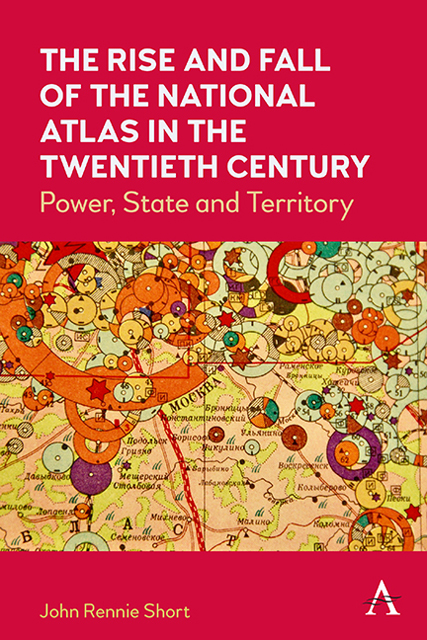Book contents
- Frontmatter
- Contents
- List of Figures
- List of Tables
- Acknowledgments
- 1 Introduction
- 2 The Early National Atlas
- 3 Cartographic Anxieties and the Emergence of the Modern National Atlas
- 4 Cartographic Ruptures and the National Atlas
- 5 National Atlas, Global Discourses
- 6 The Physical World of the National Atlas
- 7 The Social World of the National Atlas
- 8 The End of the National Atlas?
- Notes
- Appendix: National Atlas Bibliography
- Index
- Frontmatter
- Contents
- List of Figures
- List of Tables
- Acknowledgments
- 1 Introduction
- 2 The Early National Atlas
- 3 Cartographic Anxieties and the Emergence of the Modern National Atlas
- 4 Cartographic Ruptures and the National Atlas
- 5 National Atlas, Global Discourses
- 6 The Physical World of the National Atlas
- 7 The Social World of the National Atlas
- 8 The End of the National Atlas?
- Notes
- Appendix: National Atlas Bibliography
- Index
Summary
A useful working definition of a national atlas is “a generally comprehensive, officially sanctioned single-country atlas.” The publication of Atlas öfver Finland (Atlas of Finland) in 1899 marks the beginning of the modern national atlas since it has all the main attributes of subsequent national atlases produced over the course of the next 100 years (see Figures 1.1 and 1.2). These include
• a comprehensive and official, or officially sanctioned text.
• a symbol and embodiment of national identity.
• a tool for government to inventory, classify and depict the national territory.
• a text aimed at multiple and extended audiences including the international scientific community as well as a domestic readership.
• a part of the ideological apparatus for education into, and promotion of, citizenship.
• a display of the biopolitics of the state in its depiction and classification of the population.
• a depiction of national space that also makes global connections.
The heyday of the national atlas coincides approximately with the twentieth century. The modern national atlas mirrors and embodies some of the important themes of this turbulent century, including the complex connections between nation, state and territory; the rise of state-sponsored science; the full emergence of biopolitics; the active creation of a national identity; and the development of mass literacy and state education, in general and cartographic literacy in particular. Nation-states did not simply emerge. They were actively created and managed and the national atlas was an integral part of nation-making. The rise of the modern national atlas and its changing form provides an intriguing window into the connections between nation-state, science, territory and power.
The national atlas is a complex text. It is a scientific document, a tool of legitimation, a spatial claim, a textual appropriation of territory and an attempt to foster, encourage and create a national community. The national atlas is an attempt to represent and legitimize the territory of the state for both an internal and external audience; it is an element in national ideological constructions encased in global scientific discourses. I aim to unfold these complex layers of the national atlas.
Between 1900 and 2000, more than seventy countries produced a national atlas, an official or quasi-official rendering of the nation-state in maps and accompanying text. I consider the reasons behind and the characteristics of this state-sponsored cartographic explosion.
- Type
- Chapter
- Information
- The Rise and Fall of the National Atlas in the Twentieth CenturyPower, State and Territory, pp. 1 - 10Publisher: Anthem PressPrint publication year: 2022



